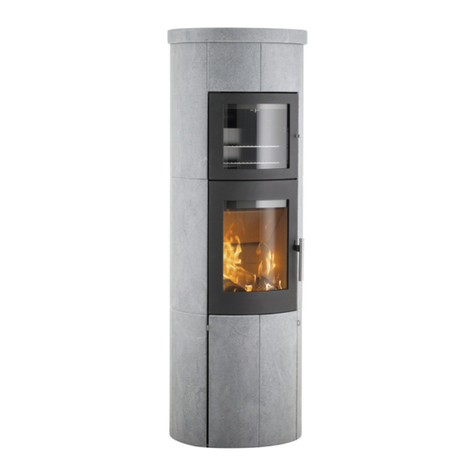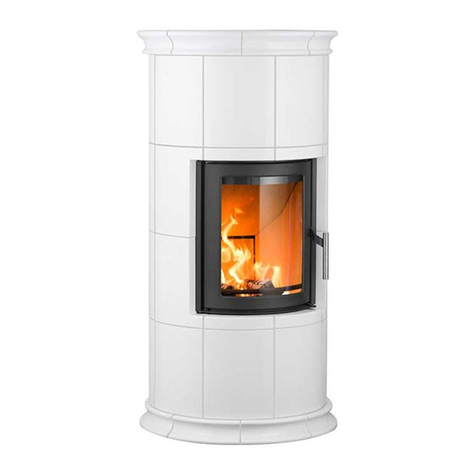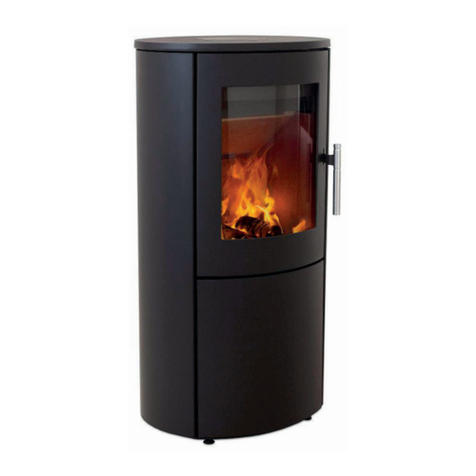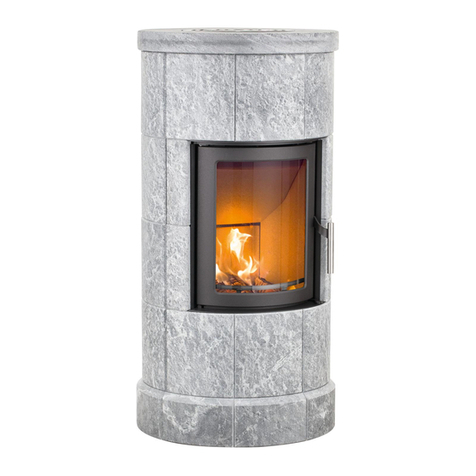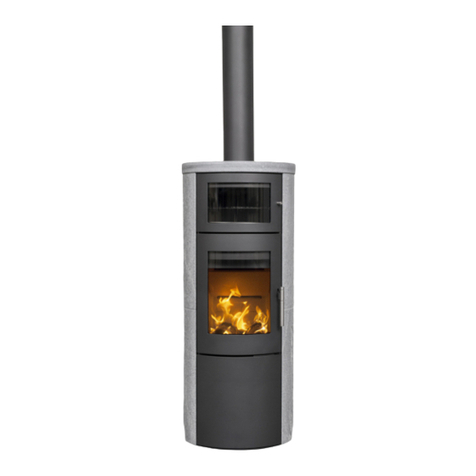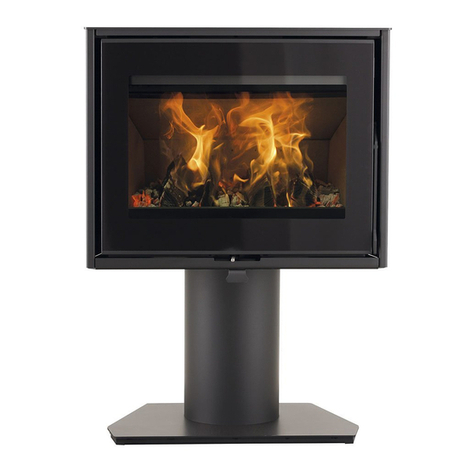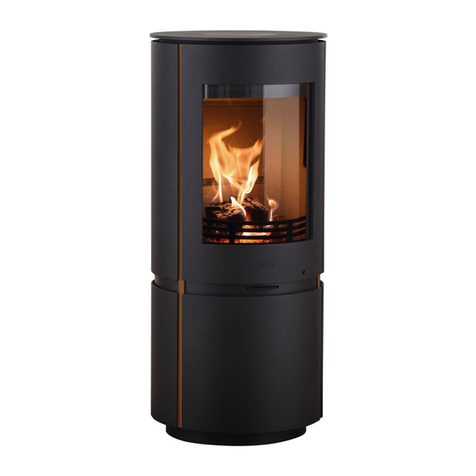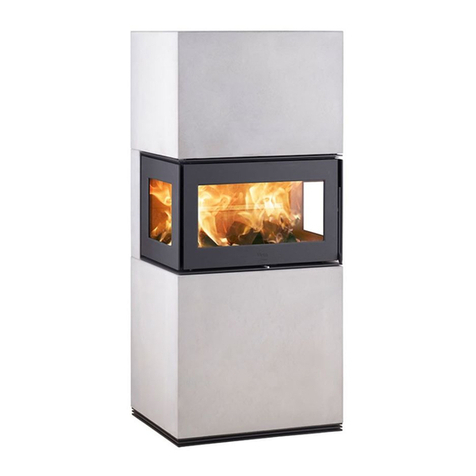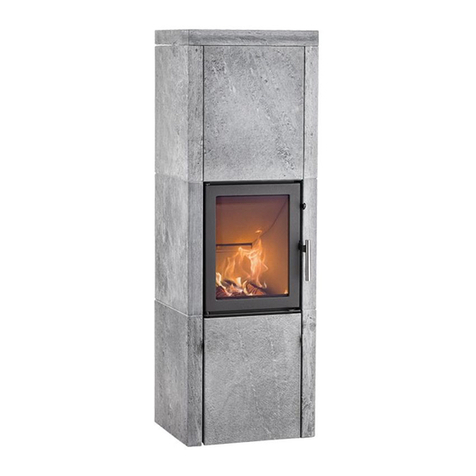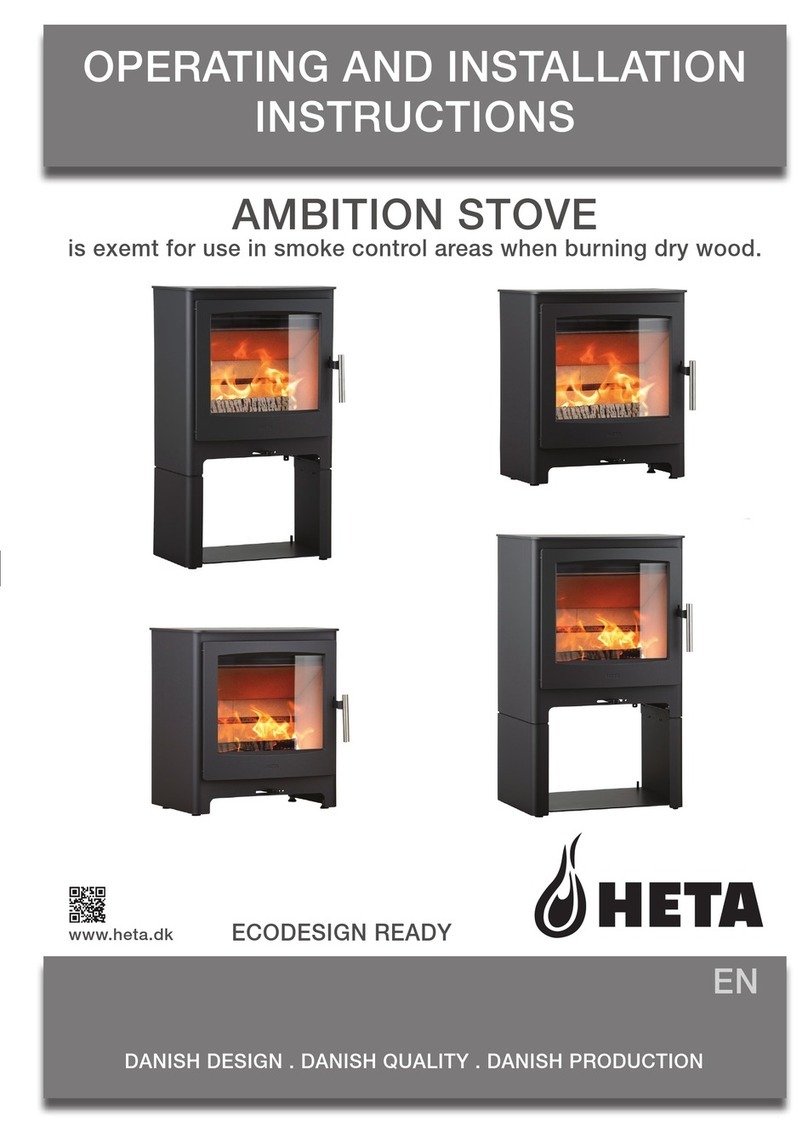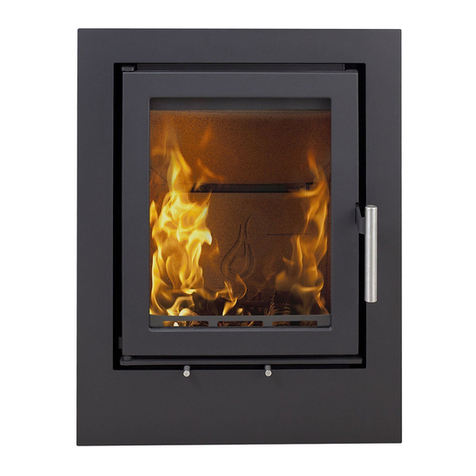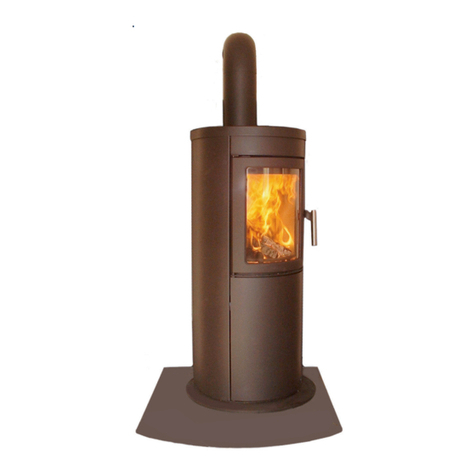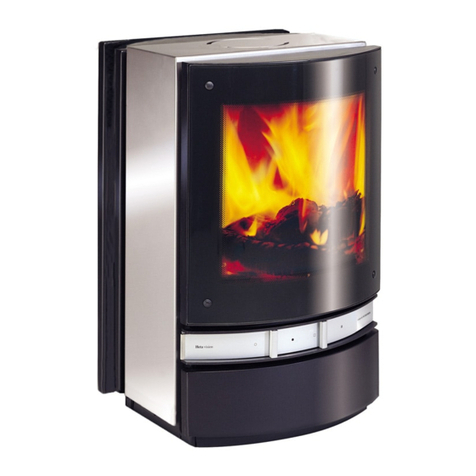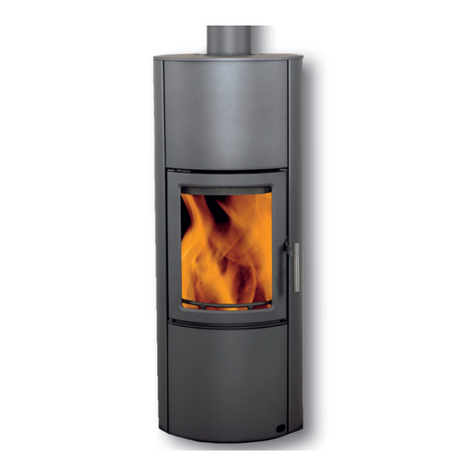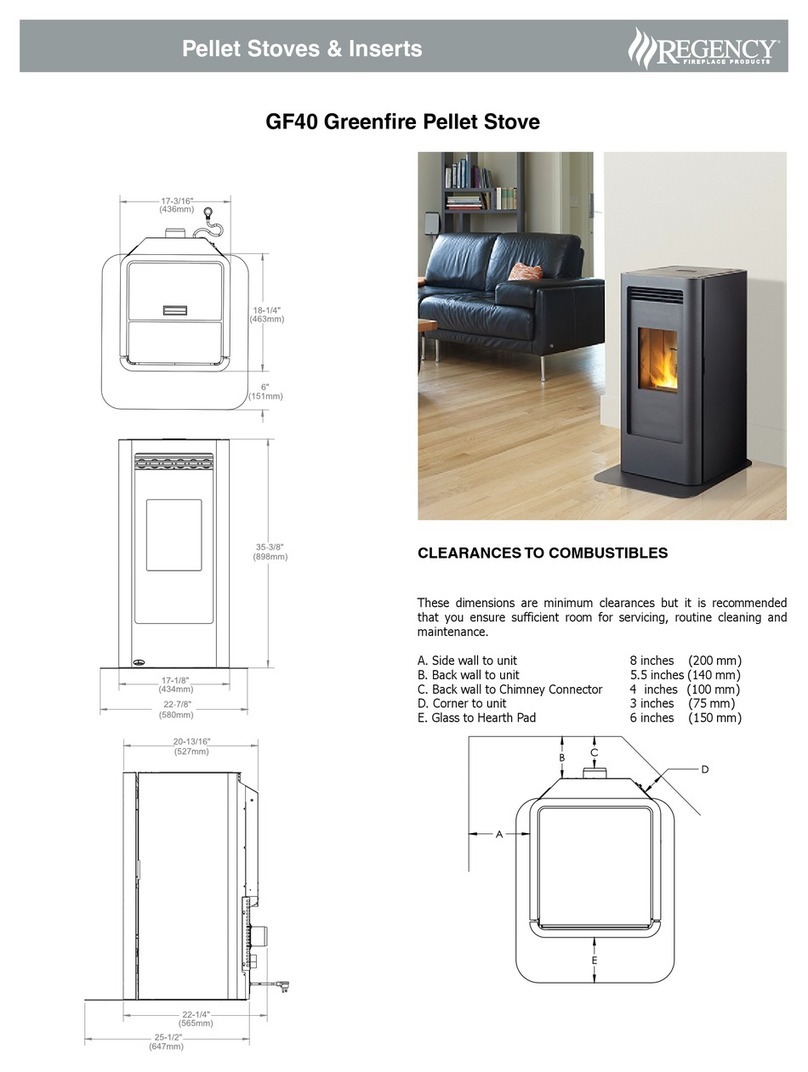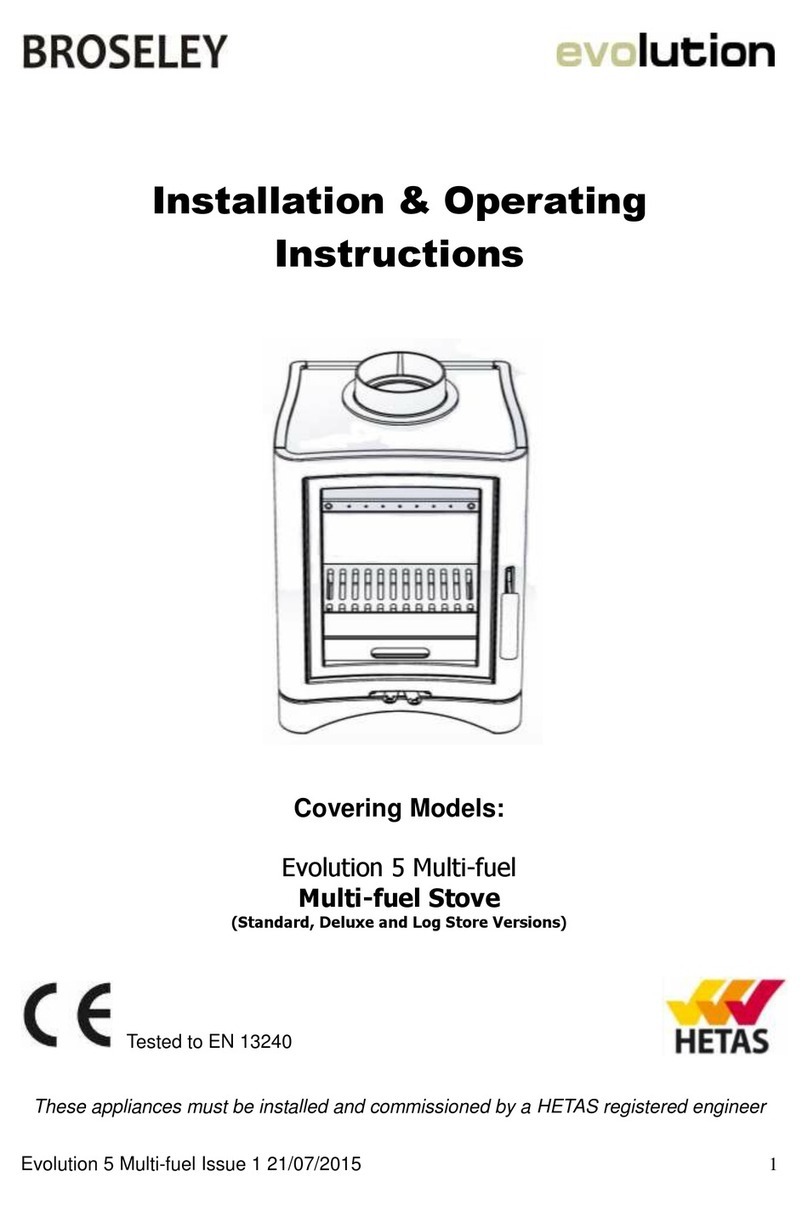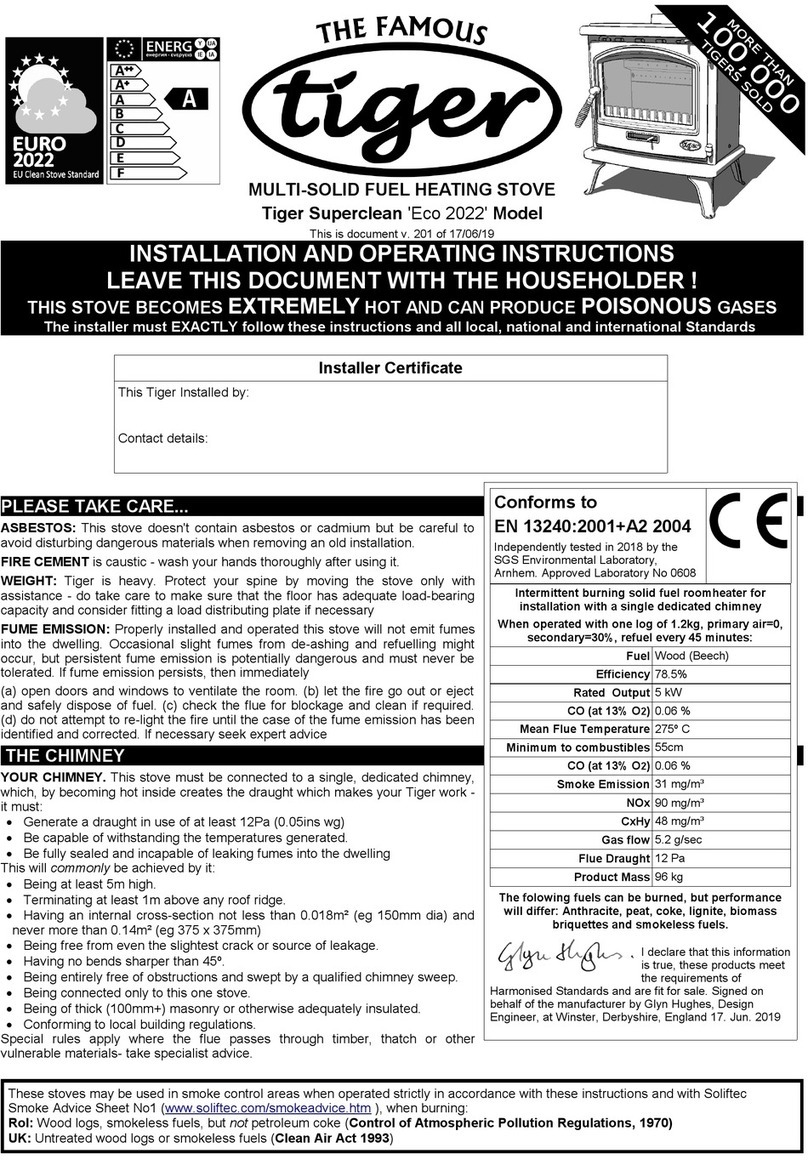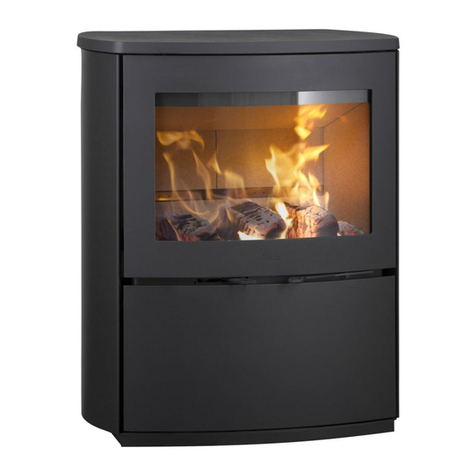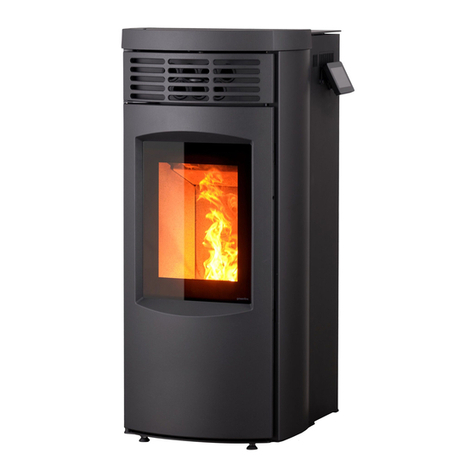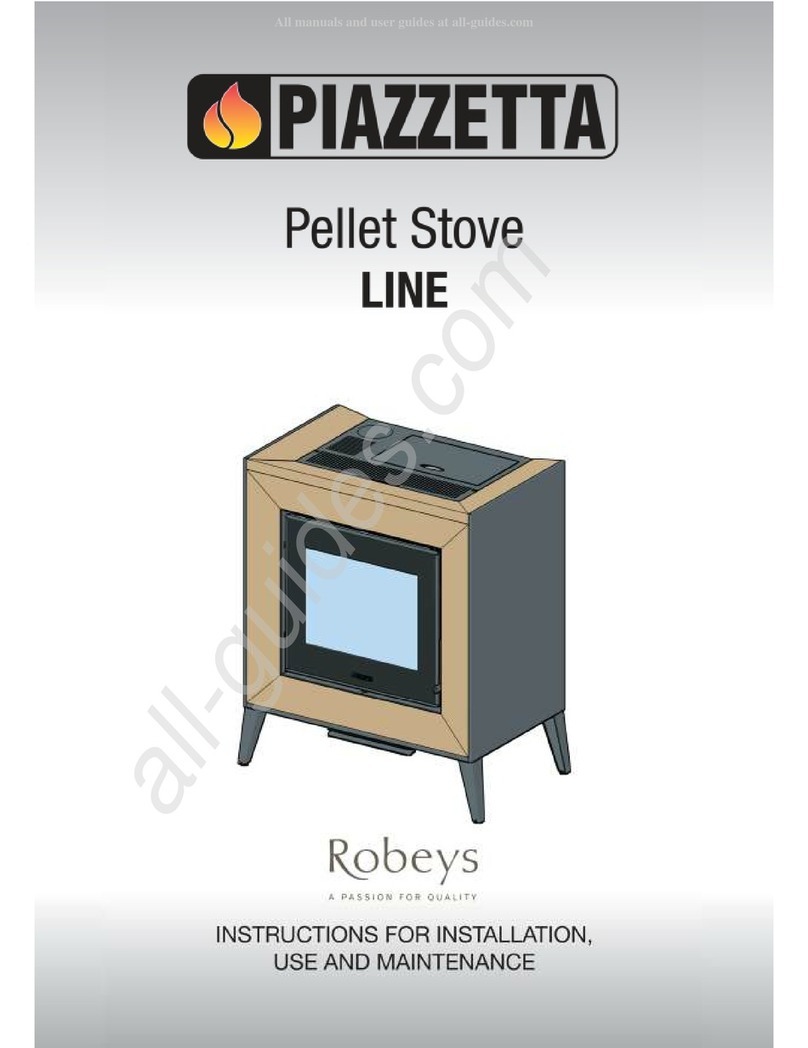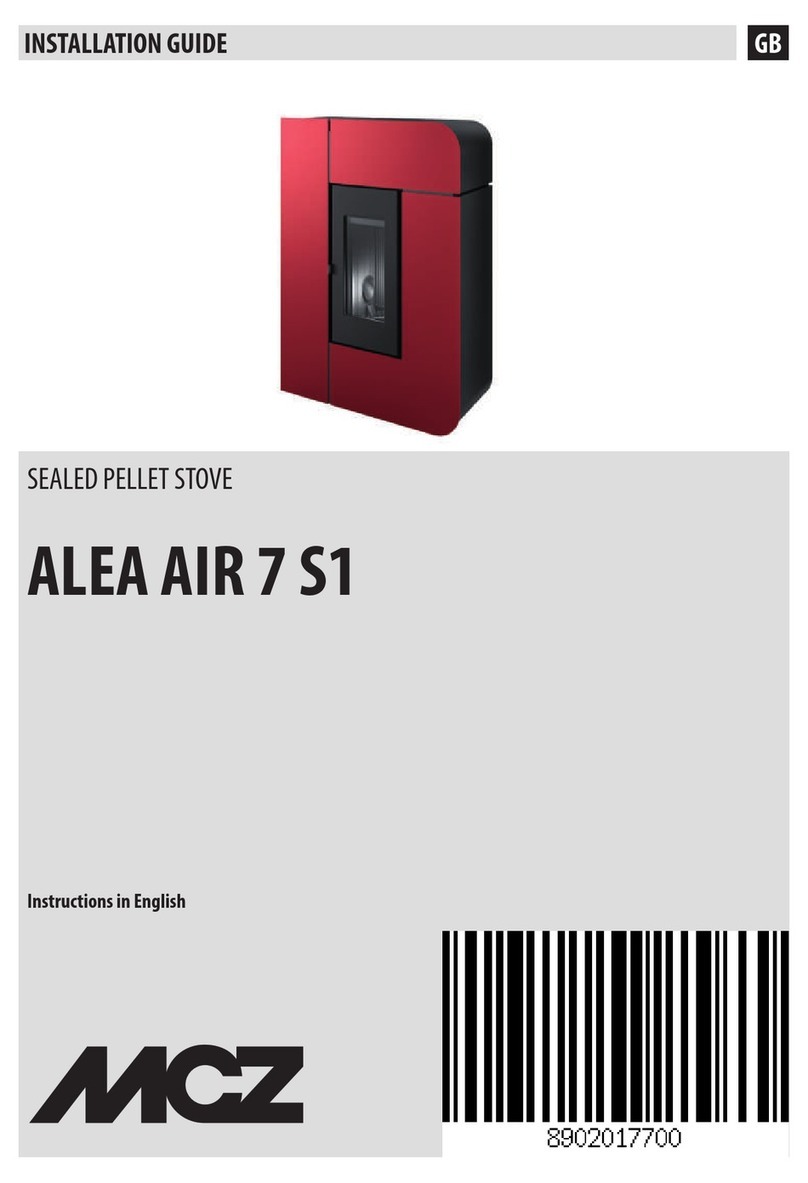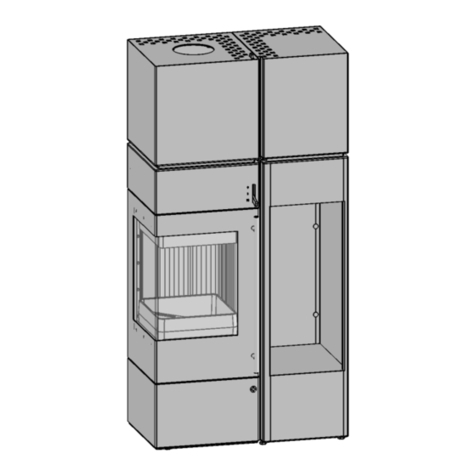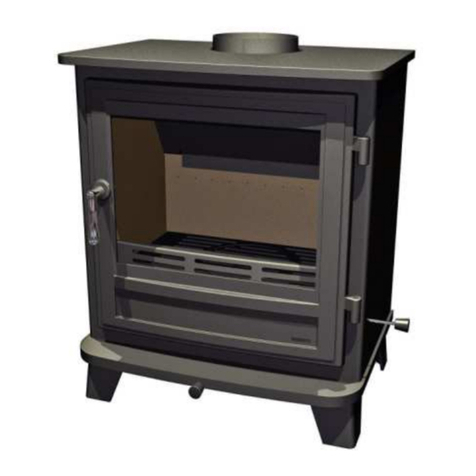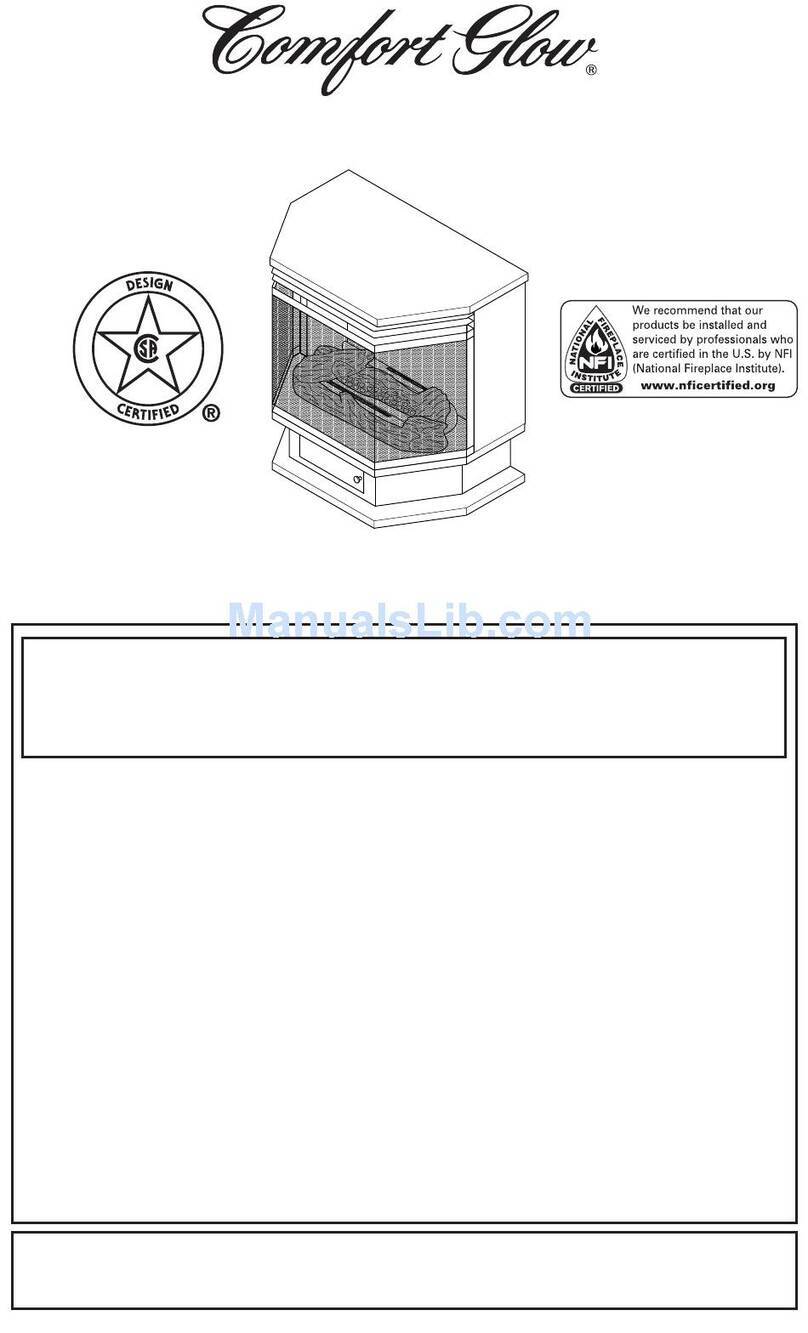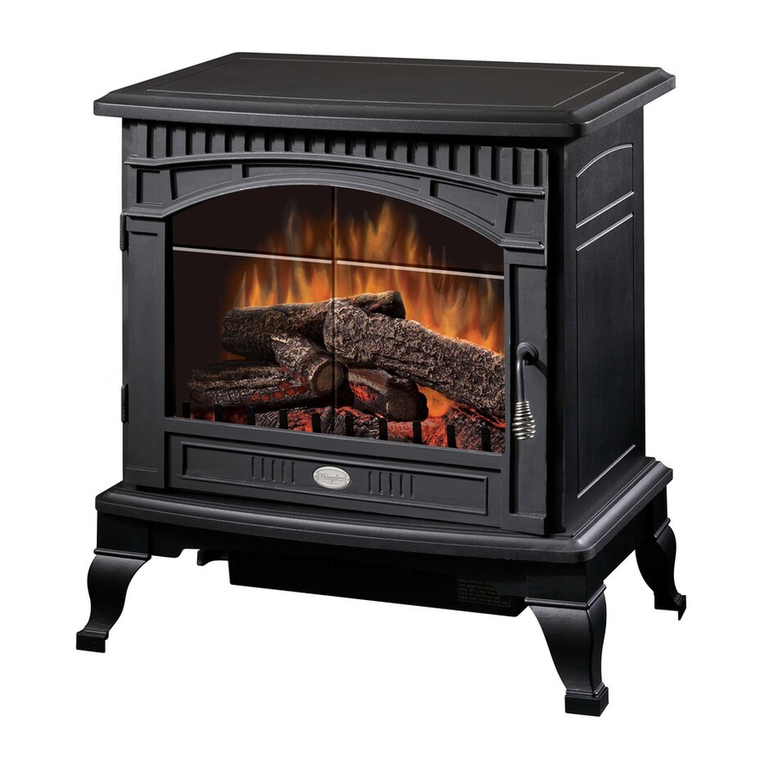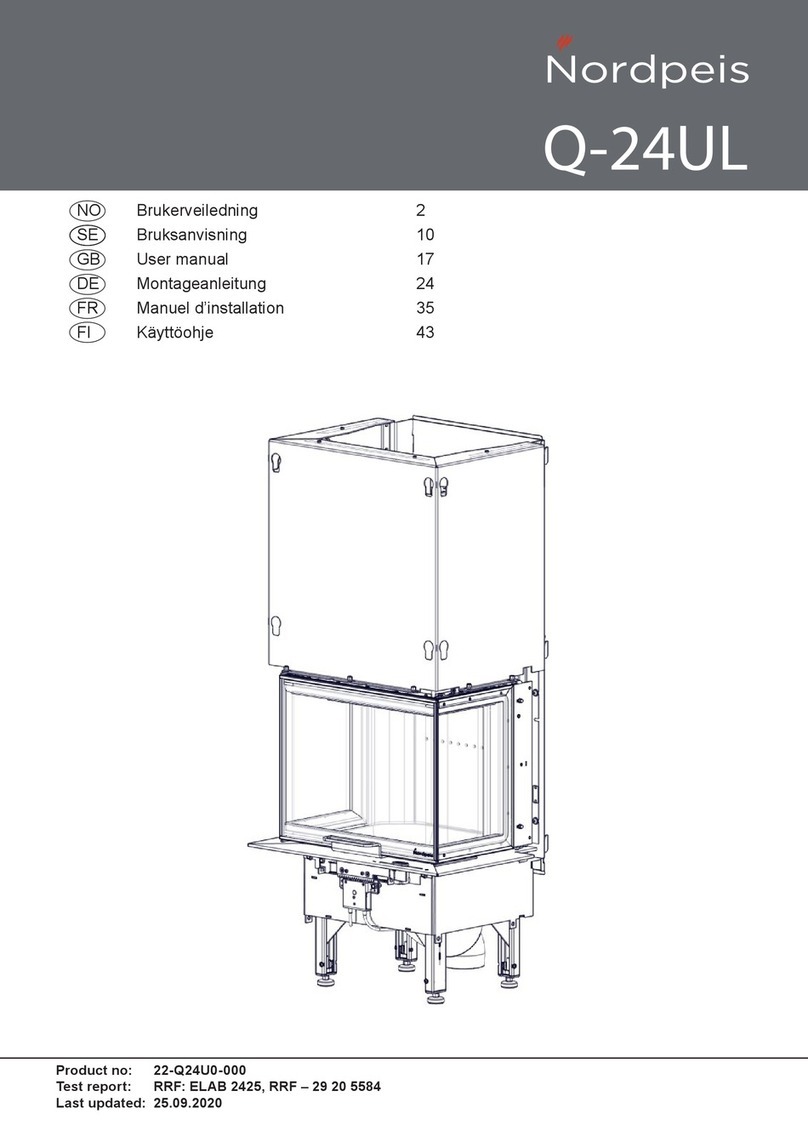The chimney connection
The chimney opening must follow
national and local regulations. Howe-
ver, the area of the opening should
never be less than 175 cm2, which
corresponds to a diameter of 150 mm.
If a damper is fitted in the flue gas
pipe, there must always be at least
20 cm2of free passage, even when
the damper is in its “closed” position.
Wood-burning stoves must never
be connected to chimneys that are
also linked to a gasfired heater. An
efficient stove makes high demand on
chimney properties – so always have
your local chimney sweep evaluate
your chimney.
Inspire 40 and 45 can be installed with
a horisontal straight back outlet.
Maximum length of the pipe should be
500 mm with a 5” diameter.
The start draft (cold stove) of the
chimney should be at least 6 pascal.
Connection to a brick chimney
Brick a thimble into the chimney and
seat the flue gas pipe in this. The
thimble and flue gas pipe must not
penetrate the chimney opening itself,
but must be flush with the inside of
the chimney duct. Joins between
brickwork, the thimble and flue gas
pipe must be sealed with fireproof
material and/or beading
Connection to a steel chimney
When fitting a connection from a top-
output stove directly to a steel chim-
ney, we recommend fitting the chim-
ney tube inside the flue gas spigot so
that any soot and condensation drops
into the stove itself rather than col-
lecting on the exterior surface of the
stove. Changing smoke outlet from
top-mounted to rear-mounted (see fig.
8-15 on page 11).
For connections to chimneys that are
run through ceilings, all national and
local regulations regarding distance to
flammable material must be followed.
It is important that the chimney is
fitted with roof support so that the top
panel of the stove is not required to
bear the entire weight of the chimney
(excessive weight may damage the
stove).
Draft conditions
Poor draft may result in smoke being
emitted from the stove when the door
is opened. The minimum chimney
draft to ensure satisfactory combu-
stion in stoves of this kind is 13 PA.
However, there will still be a risk of
smoke emission if the firing door is
opened during powerful firing.
Inspire 40: The flue gas temperature at
nominal output is 263°C when expel-
led to an exterior temperature of 20°C.
The flue gas mass flow is 3.7 g/sec.
Inspire 45: The flue gas temperature at
nominal output is 221°C when expel-
led to an exterior temperature of 20°C.
The flue gas mass flow is 4.0 g/sec.
The chimney draft is generated by the
difference between the high tempera-
ture of the chimney and the low tem-
perature of the fresh air. The length
and insulation of the chimney, wind
and weather conditions also have an
effect on the ability of the chimney to
generate appropriate under pressure.
If the stove has not been used in a
while, check that the chimney and
stove are not blocked with soot, bird
nests, etc., before using it.
Reduced draft can occur
when:
• The difference in temperature












